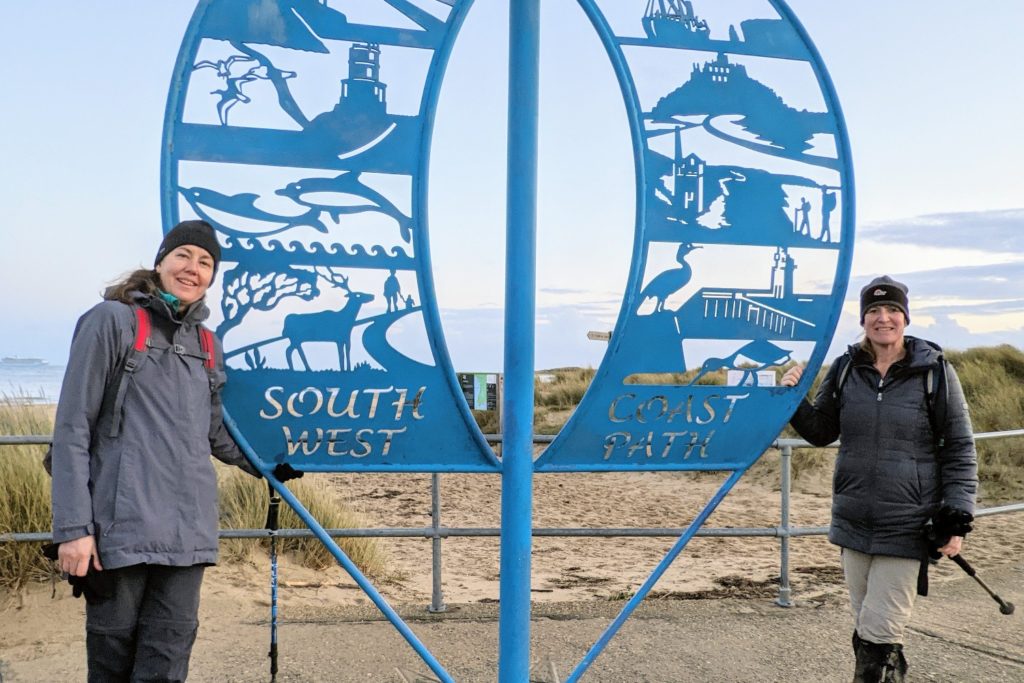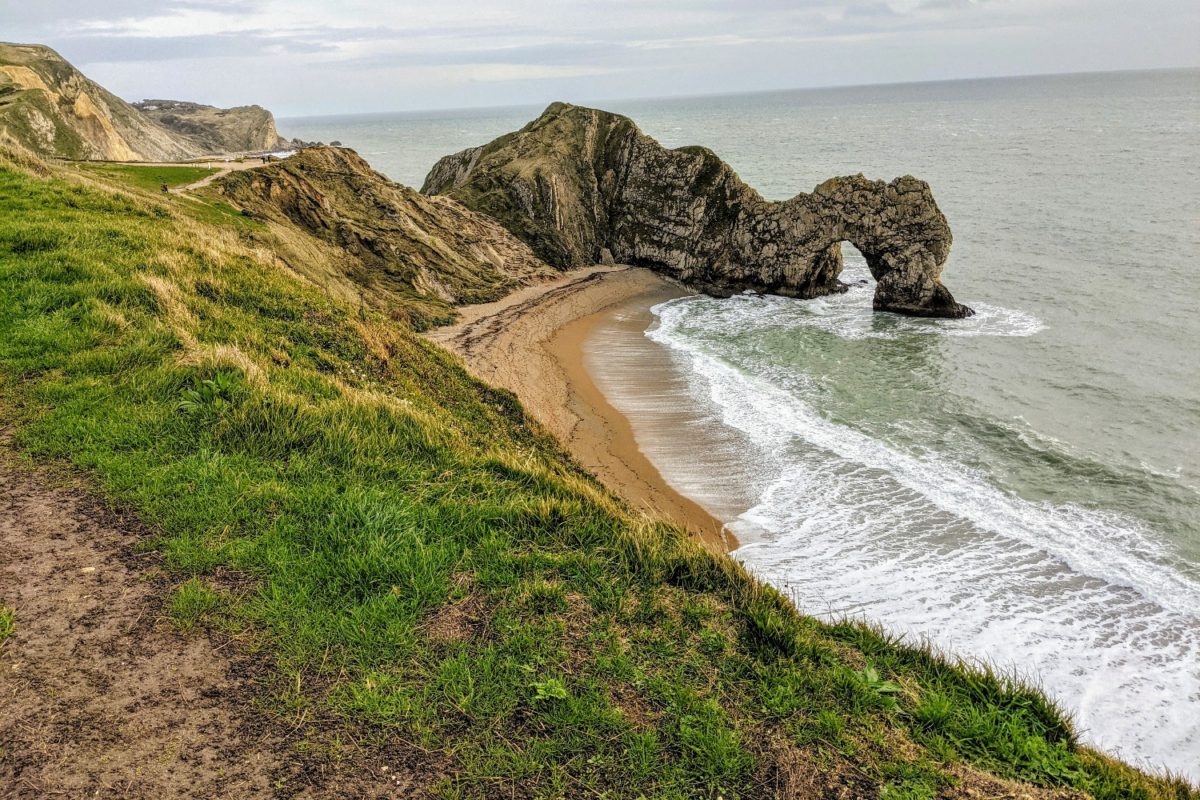
| Day | Route | Mileage | Approx time |
| 50 | Weymouth to Lulworth Cove | 10.9 | 5 hours |
| 51 | Lulworth Cove to Worth Matravers | 14.2 | 7 hours |
| 52 | Worth Matravers to Poole | 17 | 7.5 hours |
We were familiar with this stretch of the coast as we had both walked it before. It was a day of outstanding scenery, the usual strenuous climbs, and some of the Dorset coast’s most iconic landscapes. The path was fairly gentle out of Weymouth as we looked back towards Portand, Portland Harbour and a new collection of cruise ships.

The chalk cliffs on this stretch are a thing of beauty and majesty. Their height and scale made the walking strenuous as we navigated the steep slopes. We stood on the high White Nothe cliffs, with its white jagged rocks, where the land juts out, and enjoyed the spectacular views to Bat’s Head and beyond. We walked on grassy clifftops which contrasted with the white chalk and the grey, mildly restless waters below.
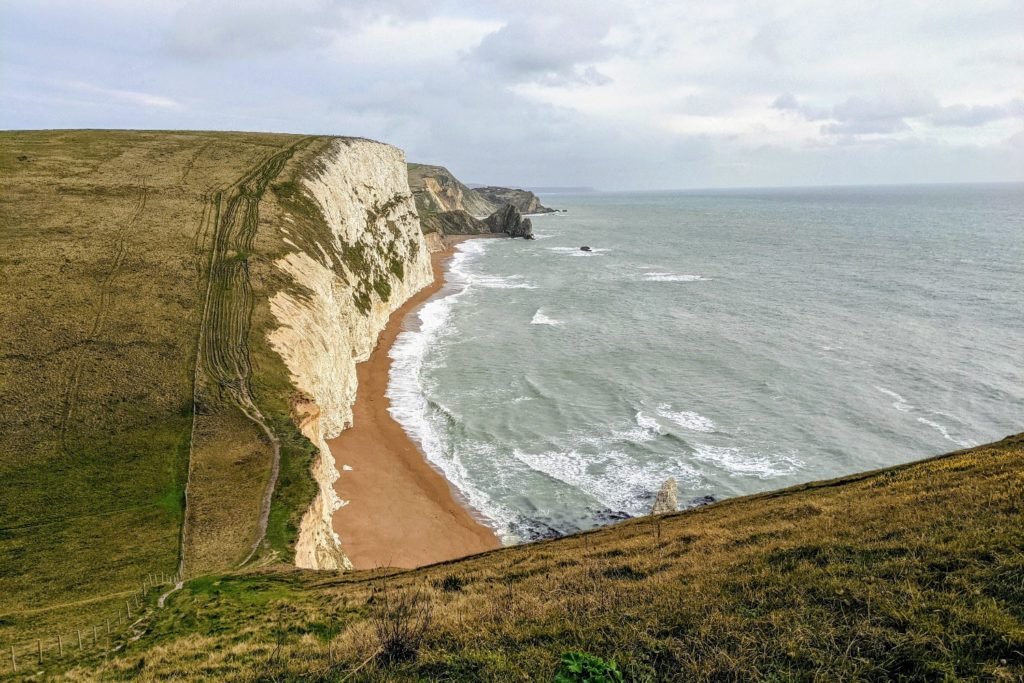
The path became busier as we approached the famous and much visited limestone arch at Durdle Door. It was as photogenic as ever. As the sea and scenery around it is always in flux, each visit rewards you with something new. I have so many photos of my favourite view from Durdle Door: looking east over The Man O’ War beach with its spectacular cliffs and its two semi-circular shaped bays leading up to Dungy Head.
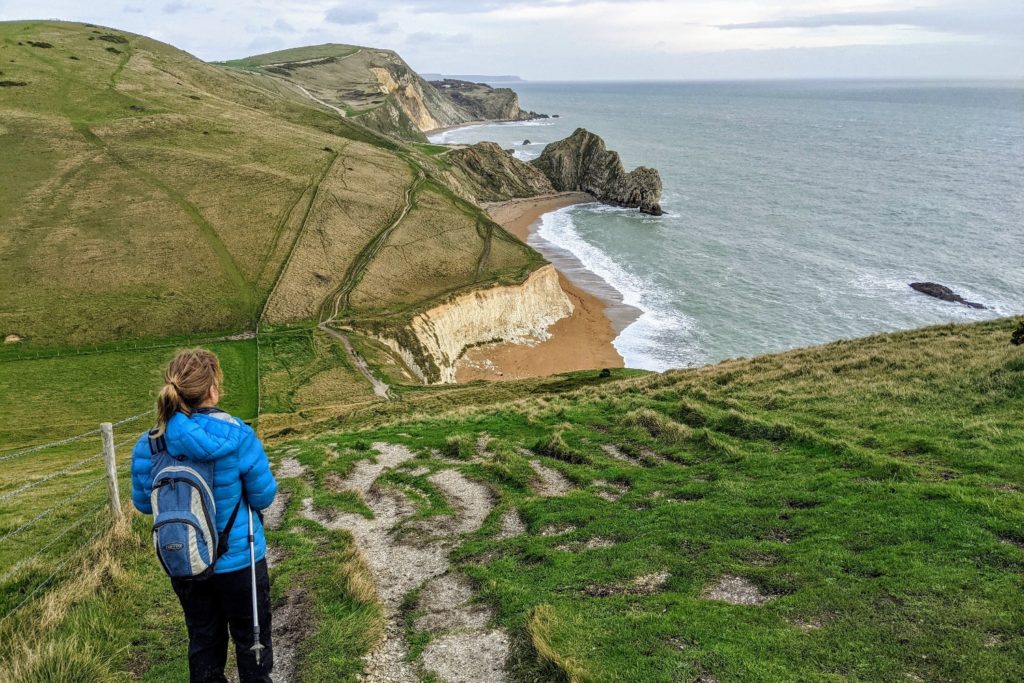
From here it was an easy descent on a well kept path down into the beautifully secluded and geologically rich Lulworth Cove, where we ended the day walk.
This was an amazing day’s walk. I had walked this stretch 10 years earlier and had forgotten what a gem it was. It was tough with some incredibly difficult climbs, so we plodded on at a relatively slow pace and took many short breaks. It was cold with a biting wind, but the scenery was breathtakingly beautiful all day.
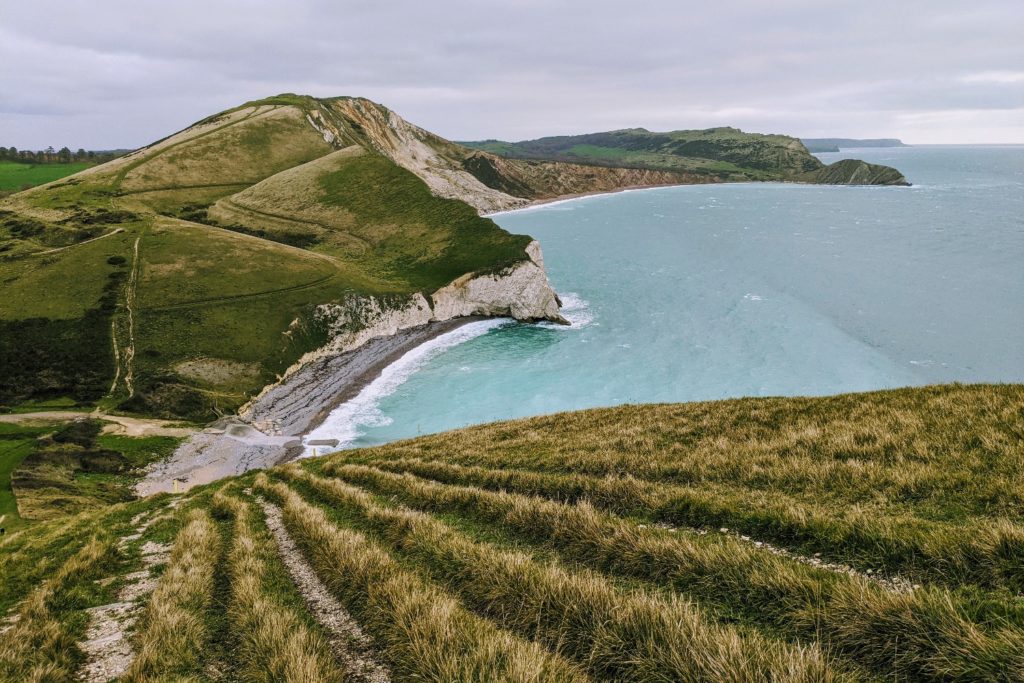
The path started behind Lulworth Cove. As we got closer to the cove there were varied views of the stunning bay from different angles. Then, at Mupe Bay, the towering white chalk cliffs came into view. These swept majestically around the bay and continued to dominate the scenery for most of the day.

To the left were the army ranges which are used for military exercises during the week. All was silent as we passed, but we could see tanks dotted amongst the rough ground.
The backdrop of chalky cliffs framed the impressive Worbarrow Bay, after which the geology began to change. We walked on damp grassy slopes into Kimmeridge Bay. Here the cliffs were formed of red coloured Kimmeridge clay and naturally formed rock ledges jutted out into the sea.
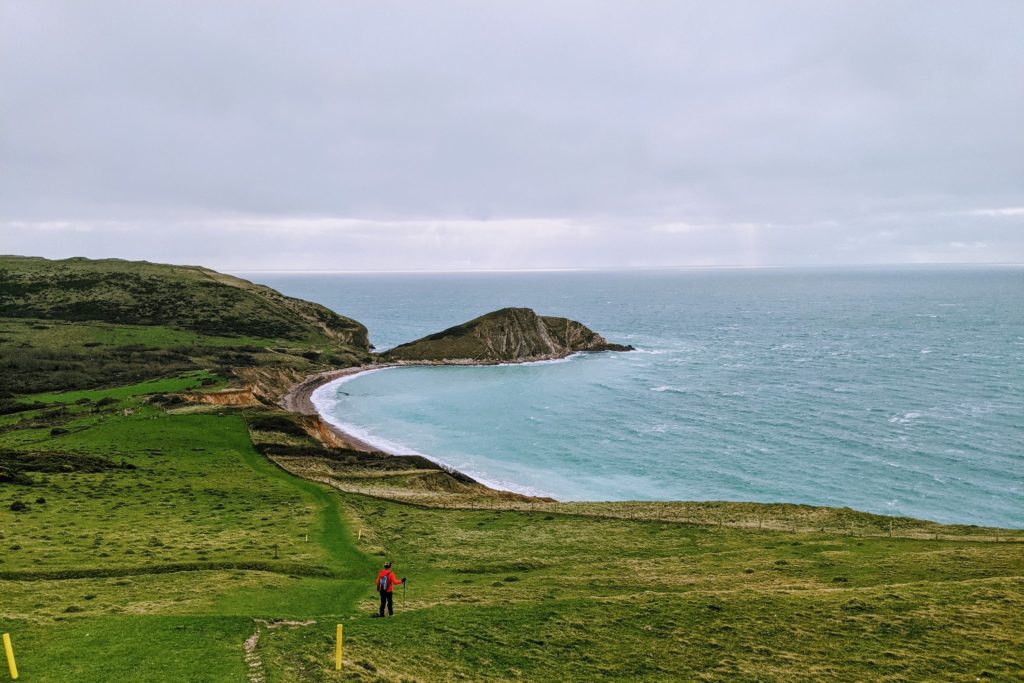
After Kimmeridge the rain started and we walked along the undulating cliffs, past Clavel Tower, towards Houns Tout. The path stayed mainly on the cliff top so was fairly easy walking. Most of the views were impaired by the now steady rain and low cloud. When we arrived at Chapman’s Pool, we turned inland to reach the small, picturesque village of Worth Matravers.
A friend dropped us off in Worth Matravers early on a December morning and arranged to meet us at the end of the day to celebrate the end of the path. We started early as we knew that the light would fade early on one of the shortest days of the year. The long distance and the strenuous walking meant it would be a challenging day. We admired the stunning views from St Aldhelm’s Head and breathed in the sea air in big gulps. Happy to be on the path again, yet tinged with sadness, as we were now on the last leg of our journey. Our trips to the South West Coast Path had become a fixed part of each year for the last 5 years. We knew we would miss it once we had finished.
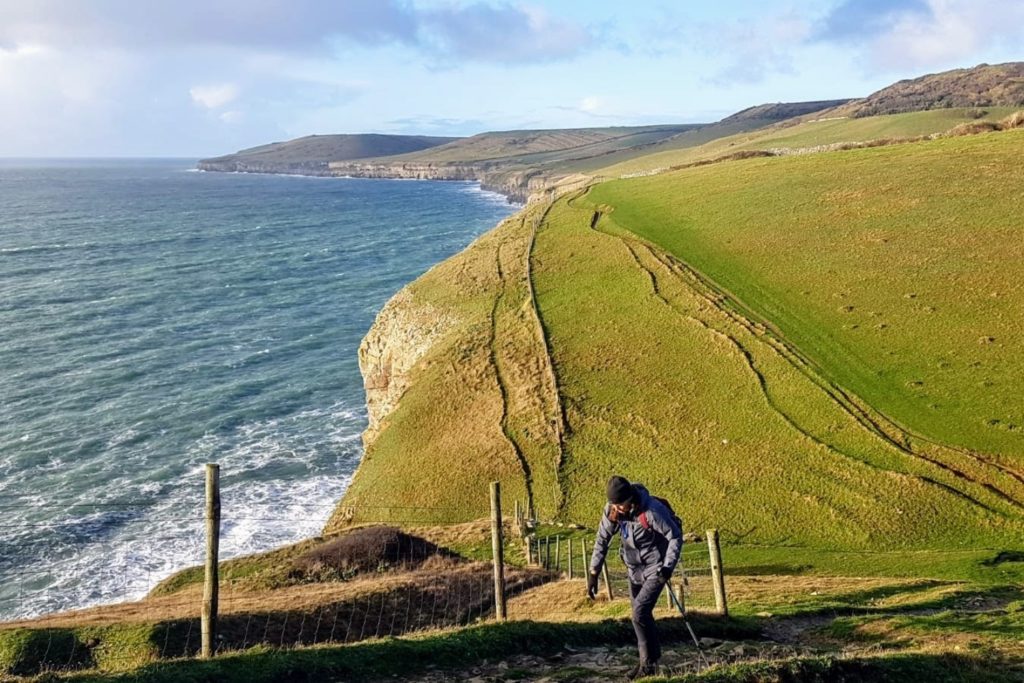
We enjoyed this familiar part of the path close to home with fresh eyes. The magnificent cliffs fell into the sea with waves lapping at the foot of the sheer faces. The low December sun lit up parts of the path while others were in shade. We enjoyed the contrasts. We walked through grassland, woodland, open cliffs and fields of cows. We made our way past Winspit Quarry, which had provided stone for buildings in London until the 1940s, and is now closed and home to bat colonies. Other notable milestones were Dancing Ledge, a rock shelf popular for finding pools to swim in, Durlston Lighthouse and Castle, Country Park and Tilly Whim Caves, again where they quarried Purbeck stone.
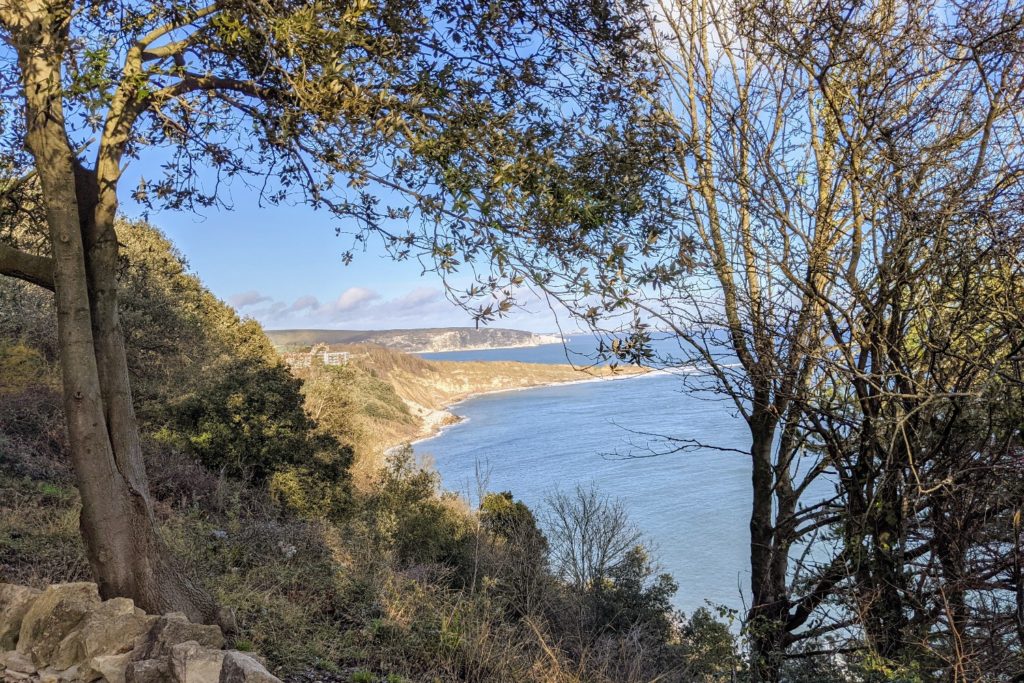
Stopping for coffee at Durlston Castle we marvelled at the breath-taking views west from here towards Swanage and the white chalk of the Ballard Cliff beyond. Our friends surprised us and met us in Swanage so four of us walked together for the final 7 miles. There was one more big climb out of Swanage and up to the top of Ballard Down, where we saw the magnificent views over Poole Harbour and the stunning stacks of Old Harry Rocks, which we knew so well. As the sun started to descend and the shadows grew longer, we made our way downhill to Studland village and the final stretch on the long flat Studland Beach.
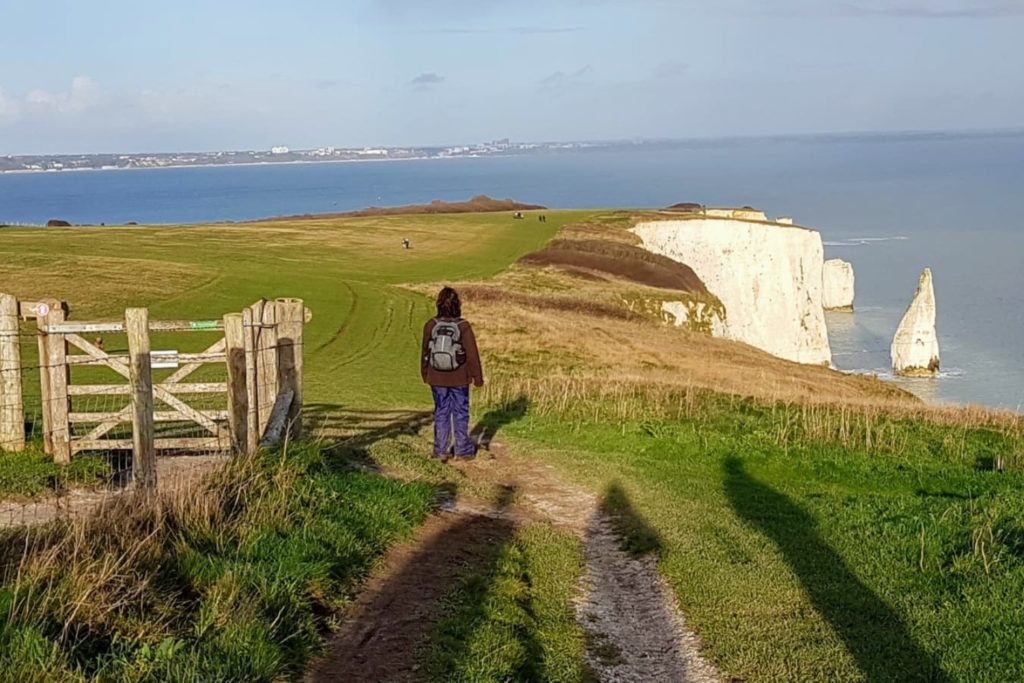
At 4pm on Sunday 20th December 2020, we stood by the commemorative marker for the obligatory completer photos. As the sun disappeared and the stars emerged, we laid out our picnic blanket, cracked open the champagne and sat shivering on the beach, as determined to celebrate our achievement as we had been to complete the 630 miles.
